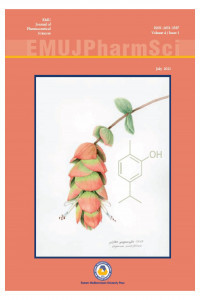Plant biodiversity and unique yew stands of Istranca (Yıldız) mountains in European Turkey
Plant biodiversity and unique yew stands of Istranca (Yıldız) mountains in European Turkey
Population of Taxus baccata in the western point of Turkey has been identified in cooperation with Central Anatolia Forestry Research Institute and Bulgarian Academy of Science (BAS)during the project entitled “Conservation and Sustainable use of Biodiversity in Istranca (Yıldız) Mountain – Challenges and Opportunities for Promotion and Implementation of the Transboundary Biosphere Reserve Concept (37534303 TUR)”.Taxus baccata hotspot contains Cylamen coum var. coum; an endangered species according to the Bern Convention appendix I list, on European scale. The most important characteristics of this populationis the height of the trees. They are also the secondary tree population in the rainforest, which are completely grown under shade conditions.
Keywords:
Taxus, European Turkey, Taxus baccata yew, conservation,
___
- Akalın Uruşak E, Özhatay F N, Güler N, Ersoy H, Başak N, Yeşil Y, Oral D, Demirci S (2013). The Flora of Yıldız Mountains (Kırklareli) Biosphere Project area. Turk J Bot 37: 225-269.
- Baytop A, Byfield AJ (1997). The presence of Logfia minima (Sm.)Dumort. (Compositae) in Turkey. Turk J Bot 21:245–246.
- Davis PH, (1965-1985) The Flora of Turkey and the East Agean Islands, vol 1-9,University press Edinburgh.
- Koçyiğit M, Özhatay N (2010). A contribution to the genus Allium L. (sect. Codonoprasum) in Turkey. Turk J Bot 34: 391–395.
- OGM-OrTohum (2010). Uygulama Çalışmaları, Islah Tesisi, Gen Koruma Ormanları, Orman Genel Müdürlüğü, Orman Ağaçları ve Tohumları Islah Araştırma Enstitüsü Müdürlüğü. Accessed Date: 19 Ocak 2016, http://ortohum.ogm.gov.tr/Sayfalar/Islah-Tesisleri.aspx.
- Özhatay N (1975). Trakya florasına katkılar. İstanbul Üniversitesi Eczacılık Fakültesi Mecmuası 11: 223–226 (in Turkish).
- Özhatay N, Byfield A, Atay S (2003). Türkiye’nin Önemli Bitki Alanları. İstanbul: Doğal Hayatı Koruma Vakfı (WWF Türkiye)Yayını (in Turkish).
- Özhatay N, Kültür Ş (2006). Check-list of additional taxa to the supplement Flora of Turkey III. Turk J Bot 30: 281–316.
- Özhatay N, Kültür Ş, Aslan S (2009). Check-list of additional taxa to the supplement Flora of Turkey IV. Turk J Bot 33: 191–226.
- Özhatay N, Kültür Ş, Gürdal MB (2011). Check-list of additionaltaxa to the supplement Flora of Turkey V. Turk J Bot 35: 589–624.
- Koçyiğit M, Seregin AP, Özhatay N, Friesen N (2016). Allium urusakiorum (Amaryllidaceae) a new member of the balkan clade of the section Oreioprasonfrom European Turkey Phytotaxa 275(3): 228-242.
- Öztekin M, Karadağ M (2008). Project Report, Conversation and Sustainable use of Biodiversity in Strandja (Yıldız) Mountain- Challenges and Opportunities for Promotion and Implementation of the Transboundary Biosphere Reserve Concept (37534303 TUR).
- Poore MED (1955). The Use of Phytosociological Methods in Ecological Investigations: I Braun-Blanquet System, Journal of Ecology, 43:1, p. 226-244.
- Seçmen Ö, Leblebici E (1997). Türkiye sulak alan bitkileri ve bitki örtüsü. İzmir: Ege Üniversitesi Fen Fakültesi Yayınları No. 158(in Turkish).
- Seçmen Ö, Leblebici E (1991). Aquatic flora of Thrace. Willdenowia, 20: 53–66.
- Trease,G.E. & Evans W.C.(1983) Pharmacognosy, 12th edition,Bailere Tindall, London.
- Turrill WB (1924). On the flora of the Gallipoli Peninsula. Kew Bulletin, 20: 53–66.
- Tutin TG, Hewwood VH, Burges NA, Moore DM, Valentine DH,Walters SM, Webb DA (eds.) (1964–1980). Flora Europaea,Vols. 1–5. Cambridge: Cambridge University Press.
- Webb DA (1966). The Flora of European Turkey. Proceedings of the Royal Irish Academy, 65 Sect. B 1: 1–100.
- Yarcı C (1997). Flora of Demirköy (Istranca mountains/KırklareliEuropean Turkey). Flora Mediterranean 7: 55–99.
- Yarcı C (1999). Contributions to the flora of the western part of Istranca mountains (Kırklareli/Thrace region). Turk J Bot 23: 211–228.
- Yıldız B (2009). A new record for the flora of Turkey: Cirsium candelabrum Griseb. (Cirsium Sect. Cirsium, Asteraceae,Cynareae). Turk J Bot 33: 47–51.
- ISSN: 2651-3587
- Başlangıç: 2018
- Yayıncı: Doğu Akdeniz Üniversitesi
Sayıdaki Diğer Makaleler
Healthy life-style patterns of pharmacists in Turkey
The metabolites of ellagitannin metabolism urolithins display various biological activities
Jale YUZUGULEN, Bahareh NOSHADİ, Karar SHUKUR, Mustafa Fethi SAHİN, Hayrettin Ozan GULCAN
Forced degradation studies of new formulation containing naltrexone
Golnaz YAGHOUBNEZHADZANGANEH, E. Vildan BURGAZ
Plant biodiversity and unique yew stands of Istranca (Yıldız) mountains in European Turkey
Mehtap OZTEKİN, F. Neriman ÖZHATAY
Oleuropein amounts of olive leaves from different regions of Northern Cyprus
